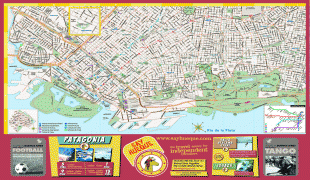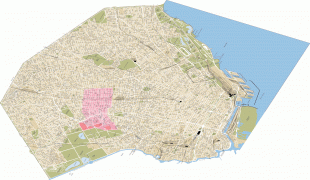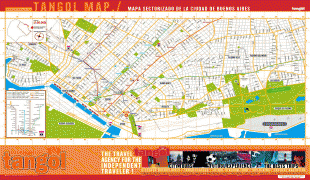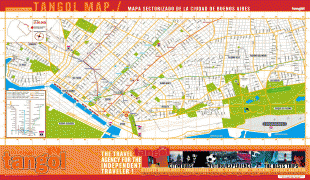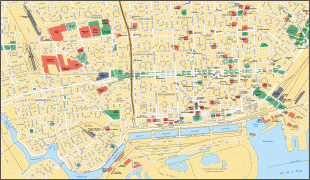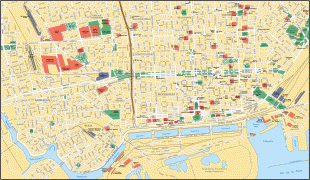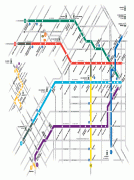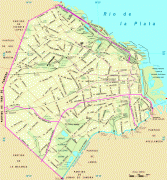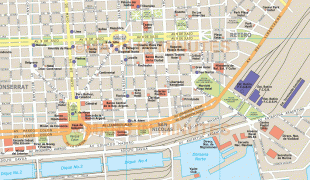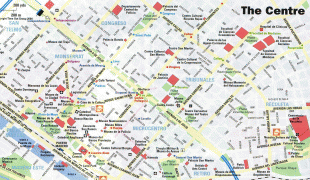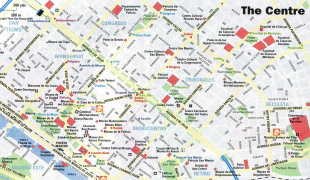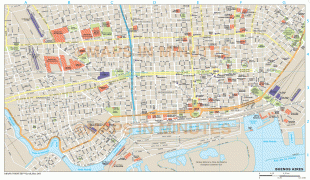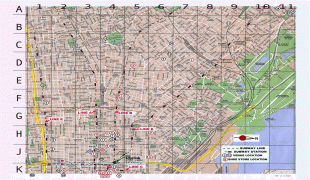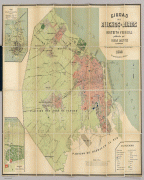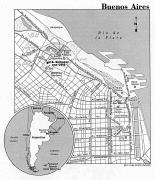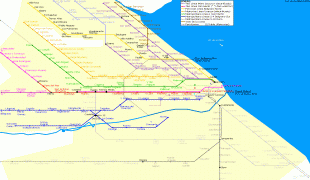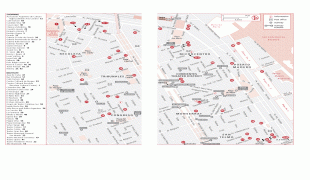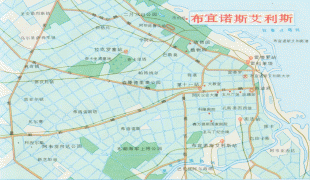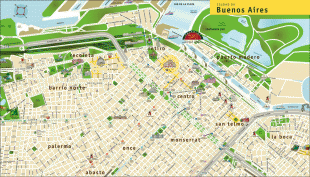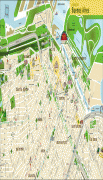Buenos Aires (Buenos Aires)
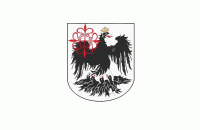 |
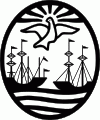 |
The city of Buenos Aires is neither part of Buenos Aires Province nor the Province's capital; rather, it is an autonomous district. In 1880, after decades of political infighting, Buenos Aires was federalized and removed from Buenos Aires Province. The city limits were enlarged to include the towns of Belgrano and Flores; both are now neighborhoods of the city. The 1994 constitutional amendment granted the city autonomy, hence its formal name of Autonomous City of Buenos Aires. Its citizens first elected a Chief of Government in 1996; previously, the Mayor was directly appointed by the President of Argentina.
The Greater Buenos Aires conurbation, which also includes several Buenos Aires Province districts, constitutes the fourth-most populous metropolitan area in the Americas, with a population of around 15.6 million. It is also the second largest city south of the Tropic of Capricorn. The quality of life in Buenos Aires was ranked 91st in the world in 2018, being one of the best in Latin America. In 2012, it was the most visited city in South America, and the second-most visited city of Latin America.
It is known for its preserved eclectic European architecture and rich cultural life. It is a multicultural city that is home to multiple ethnic and religious groups, contributing to its culture as well as to the dialect spoken in the city and in some other parts of the country. This is because since the 19th century, the city, and the country in general, has been a major recipient of millions of immigrants from all over the world, making it a melting pot where several ethnic groups live together. Thus, Buenos Aires is considered one of the most diverse cities of the Americas. Buenos Aires held the 1st FIBA World Championship in 1950 and 11th FIBA World Championship in 1990, the 1st Pan American Games in 1951, was the site of two venues in the 1978 FIFA World Cup and one in the 1982 FIVB Men's World Championship. Most recently, Buenos Aires had a venue in the 2001 FIFA World Youth Championship and in the 2002 FIVB Volleyball Men's World Championship, hosted the 125th IOC Session in 2013, the 2018 Summer Youth Olympics and the 2018 G20 summit.
It is recorded under the Aragonese's archives that Catalan missionaries and Jesuits arriving in Cagliari (Sardinia) under the Crown of Aragon, after its capture from the Pisans in 1324 established their headquarters on top of a hill that overlooked the city. The hill was known to them as Bonaira (or Bonaria in Sardinian language), as it was free of the foul smell prevalent in the old city (the castle area), which is adjacent to swampland. During the Cagliari's siege, the Catalans built a sanctuary to the Virgin Mary on top of the hill. In 1335, King Alfonso the Gentle donated the church to the Mercedarians, who built an abbey that stands to this day. In the years after that, a story circulated, claiming that a statue of the Virgin Mary was retrieved from the sea after it miraculously helped to calm a storm in the Mediterranean Sea. The statue was placed in the abbey. Spanish sailors, especially Andalusians, venerated this image and frequently invoked the "Fair Winds" to aid them in their navigation and prevent shipwrecks. A sanctuary to the Virgin of Buen Ayre would be later erected in Seville.
In the first foundation of Buenos Aires, Spanish sailors arrived thankfully in the Río de la Plata by the blessings of the "Santa Maria de los Buenos Aires", the "Holy Virgin Mary of the Good Winds" who was said to have given them the good winds to reach the coast of what is today the modern city of Buenos Aires. Pedro de Mendoza called the city "Holy Mary of the Fair Winds", a name suggested by the chaplain of Mendoza's expedition – a devotee of the Virgin of Buen Ayre – after the Madonna of Bonaria from Sardinia (which is still to this day the patroness of the Mediterranean island ). Mendoza's settlement soon came under attack by indigenous people, and was abandoned in 1541.
For many years, the name was attributed to a Sancho del Campo, who is said to have exclaimed: How fair are the winds of this land!, as he arrived. But in 1882, after conducting extensive research in Spanish archives, Argentine merchant Eduardo Madero ultimately concluded that the name was indeed closely linked with the devotion of the sailors to Our Lady of Buen Ayre. A second (and permanent) settlement was established in 1580 by Juan de Garay, who sailed down the Paraná River from Asunción (now the capital of Paraguay). Garay preserved the name originally chosen by Mendoza, calling the city Ciudad de la Santísima Trinidad y Puerto de Santa María del Buen Aire ("City of the Most Holy Trinity and Port of Saint Mary of the Fair Winds"). The short form that eventually became the city's name, "Buenos Aires", became commonly used during the 17th century.
The usual abbreviation for Buenos Aires in Spanish is Bs.As. It is common as well to refer to it as "B.A." or "BA". When referring specifically to the autonomous city, it is very common to colloquially call it "Capital" in Spanish. Since the autonomy obtained in 1994, it has been called "CABA" (per Ciudad Autónoma de Buenos Aires, Autonomous City of Buenos Aires).
Map - Buenos Aires (Buenos Aires)
Map
Country - Argentina
 |
 |
| Flag of Argentina | |
The earliest recorded human presence in modern-day Argentina dates back to the Paleolithic period. The Inca Empire expanded to the northwest of the country in Pre-Columbian times. The country has its roots in Spanish colonization of the region during the 16th century. Argentina rose as the successor state of the Viceroyalty of the Río de la Plata, a Spanish overseas viceroyalty founded in 1776. The declaration and fight for independence (1810–1818) was followed by an extended civil war that lasted until 1861, culminating in the country's reorganization as a federation. The country thereafter enjoyed relative peace and stability, with several waves of European immigration, mainly Italians and Spaniards, radically reshaping its cultural and demographic outlook; over 60% of the population has full or partial Italian ancestry, and Argentine culture has significant connections to Italian culture.
Currency / Language
| ISO | Currency | Symbol | Significant figures |
|---|---|---|---|
| ARS | Argentine peso | $ | 2 |
| ISO | Language |
|---|---|
| EN | English language |
| FR | French language |
| DE | German language |
| GN | Guarani language |
| IT | Italian language |
| ES | Spanish language |






